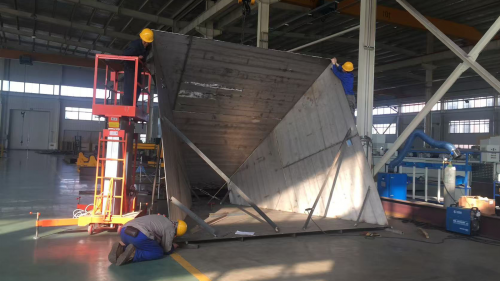Case Study:
The client’s wastewater treatment plant is located on the coast, and the sludge it processes contains a high concentration of chloride ions(Cl⁻). The client required the purchase of a sludge silo.
Site Analysis:
Sludge in coastal areas is highly corrosive. Cl⁻ accelerate the corrosion of metals, particularly causing pitting and crevice corrosion in carbon steel (Q235) and stainless steel (304).
Based on the site’s specific conditions, we customized a double-conical-bottom sludge silo using a clad steel plate. The plate was hot-rolled, consisting of a 3 mm thick inner layer of 316L stainless steel and a 10 mm thick outer layer of Q235 carbon steel, forming a composite plate of 13 mm total thickness.
This hot-rolled composite plate offers significant advantages:
(1) Superior corrosion resistance: 316L stainless steel has better resistance to chloride-induced corrosion compared to 304 or regular carbon steel, making it more suitable for wastewater plants in coastal regions.
(2) Enhanced anti-corrosion performance: The stainless-steel layer of the composite plate completely covers the inner surfaces, preventing chloride penetration and corrosion. Internal welds are performed using welding rods with higher corrosion resistance than 316L, and special treatment ensures excellent corrosion resistance on the inner surface.
(3) Higher structural strength: Hot-rolled composite plates achieve metallurgical bonding (molecular-level bonding), giving them greater overall strength than a 13 mm plate of pure Q235 steel. They are also far superior to simply overlaying a 3 mm stainless steel liner onto a 10 mm carbon steel plate.
Among many competitors, the client chose our solution, and our product has justified the client’s trust. After seven years of operation since delivery, the sludge silo has not encountered any problems, fully demonstrating the reliability of composite plates in chloride-rich environments.
This project demonstrates Haibar’s cross-industry expertise—applying high-end anti-corrosion technology (clad plates) from the chemical industry to environmental engineering.
Post time: Jul-07-2025

